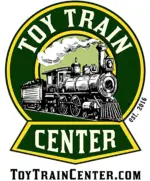The width of a train car depends so much on what era the car is from, what the use of the car is, and which country it is used in. This is because cars have changed shape over time and each country has its own sizes. Besides, countries running on different gauges are very likely to have different width train cars. A car on the Darjeeling Himalayan Railway is not going to be as wide as one of Amtrak‘s passenger cars, is it? It simply wouldn’t make it up the mountain passes.

This article has everything you need to know about the width of train cars from the West to the Far East.
50′ standard car: The standard 50-foot car is the bread and butter of the modern railway, it has a width of around 9 feet and 6 inches. This width is perfect for making sure it can fit through all tunnels and over all the bridges.
60′ standard car: The 60-foot car is slightly different than what you might expect. This car is only 9 feet and 4 inches wide. The carriage has a slightly sacrificed width for increased length. Its volume is similar to the 50-foot car because of this.
86′ auto boxcar: The 86-foot auto boxcar is designed for transporting, you guessed it, cars. They can only travel in single file, so this train car is also 9 feet and 6 inches wide. It is just so much longer so more cars can fit in it. If they made the car wide enough for the cars to fit side by side they wouldn’t make it through the first tunnel. It would be far too wide.
Shinkansen: The N7000 Series Shinkansen is far wider than you might expect. These cars are almost exactly 11 feet wide. You may find it surprising they are so wide when they travel so fast. That just goes to show how well engineered they are. They are so wide to make sure they can accommodate as many passengers as possible. The Shinkansen trains are very busy, so thinner trains would lead to the need for more trains running. It is easier and more cost-effective to make them wider.
Darjeeling: The Darjeeling Himalayan Railway has a gauge of 2 feet. Whilst there is not a standard carriage width, they must all be less than 4 feet wide. The cars are expected to negotiate the tight mountain passes just as the train does. This means they need to be as thin as possible. They would simply not make it up all of the tight spiral tracks otherwise.
Conclusion:
As you can see, the width of the train car changes so much from place to place. If you are trying to find a universal size for all train cars, you are out of luck. The 50 feet standard car is probably the most common you will find in the western world, but not in the east. Most of Asia operates on a different, slightly larger, track gauge; meaning their cars are going to be wider, just look at Japan’s Shinkansen. Darjeeling is the exception.
Watch the Shinkansen N700S entering Kyoto Station:
You can read more about railway equipment here.





